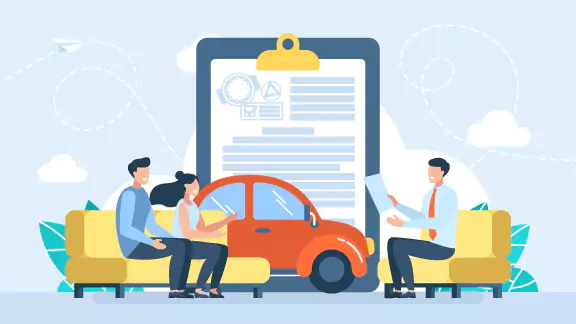Choosing the best auto insurance companies can feel like a daunting task, especially if you are a new immigrant to the United States. Yet it doesn’t have to be.
While the many options out there can easily make you feel overwhelmed, finding the best insurance company for you is all about knowing what to look for and understanding your own needs. Whether you’re shopping for health, auto, home, or any other type of insurance, the goal is to find an insurance company that offers the coverage you need at a price you can afford, with customer service that’s reliable and helpful.
In this guide, we’ll break down the key factors to consider and give you practical tips to make the process easier. By the end, you’ll be equipped to make an informed decision and choose the best auto insurance companies that can give you peace of mind.
1. Assess Your Coverage Needs
The first criterion for auto owners looking for the right insurance company is to decide what types of auto insurance coverage (car insurance) they need so that they can choose a policy that meets their needs and protects their financial interests. Here’s an overview of the key coverage types available in the U.S.:
Liability Coverage
Bodily Injury Liability (BIL):
This covers medical expenses, lost wages, and other damages if you are at fault in an accident that injures others. It may also include legal fees if you are sued.
Property Damage Liability (PDL):
This pays for damage to someone else’s property, such as their car or fence, caused by an accident you are responsible for. It ensures that you can cover the cost of repairs or replacement.
Collision Coverage
Collision Coverage helps pay for repairs to your vehicle after a collision, regardless of fault. It covers damage from hitting another car, a tree, or a guardrail. If your car is deemed a total loss (i.e., the cost to repair it exceeds its value), collision coverage will pay out the actual cash value (ACV) of the vehicle minus your deductible.
Comprehensive Coverage
Comprehensive Coverage addresses damage to your vehicle that isn’t the result of a collision. This includes:
Theft: Compensation if your car is stolen.
Vandalism: Repairs for damage caused by vandalism, like broken windows or keyed paint.
Natural Disasters: Coverage for damage from events like hurricanes, floods, or hailstorms.
Falling Objects: Damage from falling tree branches or other debris.
Uninsured/Underinsured Motorist Coverage
Uninsured Motorist Coverage (UM) protects you if you’re in an accident with a driver who has no insurance. Underinsured Motorist Coverage (UIM) kicks in when the at-fault driver has insurance, but their limits are insufficient to cover your damages. Both types ensure that you are not left financially burdened due to someone else’s lack of coverage.
Medical Payments Coverage (MedPay) and Personal Injury Protection (PIP)
Medical Payments Coverage (MedPay) pays for medical expenses for you and your passengers regardless of who is at fault. Personal Injury Protection (PIP), which is required in some states, covers a broader range of expenses, including lost wages and essential services, in addition to medical costs.
Rental Car Coverage
Rental Car Coverage pays for a rental vehicle if your car is in the shop for repairs due to a covered claim. This coverage can be crucial if you rely on your car for daily activities.
With a good understanding of coverage types, you can select the right mix of protections based on your driving habits, vehicle value, and budget. Balancing comprehensive coverage with affordability ensures you’re well-protected on the road.
2. Consider Your Budget
The next question is, “How much can you afford to spend on car insurance?”. While it’s important to find affordable rates, it’s also key to balance car insurance costs with adequate coverage. Remember, opting for minimal coverage to save on premiums might leave you underinsured in case of a major accident.
Evaluate Additional Needs
While deciding on the budget, you should consider if you need any specialized coverage or endorsements, such as:
Custom Equipment Coverage: For vehicles with significant modifications.
Gap Insurance: If you owe more on your vehicle loan than its current value.
Usage-Based Insurance: If you’re a low-mileage driver or prefer to pay based on actual driving behavior.
3. Research Insurance Providers
Now that you have a good sense of the coverage you need and also the car insurance costs you can afford, the next step is to research different insurance providers. The following are what you should focus on:
Check Company Reputation
Research the reputation of potential insurance companies by looking at the following:
Customer Reviews: Read online reviews and ratings from current and former customers to gauge satisfaction levels.
Consumer Reports: Refer to reports and ratings from consumer advocacy organizations, such as J.D. Power or Consumer Reports, which evaluate customer service and claim satisfaction.
Evaluate Financial Stability
Ensure the insurance company is financially stable and able to pay claims. Check ratings from financial rating agencies such as:
A high rating indicates the insurer is financially sound and capable of fulfilling its claims obligations.
Review Claims Handling
Evaluate the company’s claims handling process:
Ease of Filing a Claim: Check if the company offers a simple and accessible process for filing claims, whether online, via app, or by phone.
Claim Processing Time: Look into average claim processing times and how efficiently the company handles and resolves claims.
Customer Service: Assess customer service options and availability, including support hours and the ability to speak with a representative.

4. Compare Car Insurance Quotes
Obtain Multiple Quotes
Get quotes from several insurance companies to compare car insurance rates. Here are the two common channels:
Online Comparison Tools: Utilize online tools to gather quotes from multiple insurers quickly.
Contact Agents Directly: Speak with insurance agents from different companies to obtain personalized quotes based on your specific needs and driving profile.
Compare Coverage Options
When comparing quotes, make sure you are comparing similar coverage levels and deductibles. Sometimes, lower premiums come with reduced coverage limits or higher deductibles, which may not be evident at first glance.
Look for Discounts
Pay attention to available discounts that can lower your premium, such as:
Multi-Policy Discounts: For bundling auto insurance with other policies, like home or renters insurance.
Safe Driver Discounts: For maintaining a clean driving record.
Good Student Discounts: For students with good academic performance.
Low Mileage Discounts: For drivers who use their cars less frequently.
Anti-Theft Device Discounts: For vehicles equipped with approved security devices.
5. Assess Customer Service and Support
When it comes to car insurance, while pricing and coverage are important, the level of customer service can also greatly affect your experience with the insurer. Here are a few criteria you should look at:
Availability of Support
Check the availability of customer support and service channels:
24/7 Availability: Ensure the insurer offers round-the-clock support for emergencies and claims.
Multiple Channels: Look for various ways to contact the insurer, such as phone, email, live chat, and in-person service.
Customer Service Ratings
Review customer service ratings and feedback to understand how well the company handles inquiries, issues, and claims. High-quality customer service can significantly impact your overall insurance experience.
6. Review Policy Terms and Conditions
Reviewing policy terms and conditions is important when choosing the right car insurance company because these documents contain critical details that can affect your coverage and out-of-pocket costs. Here’re what you should look out for:
Read the Fine Print
Carefully review the terms and conditions of the policy:
Coverage Limits: Understand the maximum amount the insurer will pay for different types of claims.
Exclusions: Note what is excluded from coverage to avoid surprises in case of a claim.
Deductibles: Verify deductible amounts and their impact on your out-of-pocket costs.
Understand Renewal Terms
Check the renewal terms and conditions, including:
Automatic Renewal: Determine if the policy renews automatically and if any changes in terms will apply.
Rate Increases: Understand how and when rates might increase upon renewal.
7. Seek Professional Advice
Seeking professional advice when choosing the right car insurance company can be highly beneficial. An experienced and reliable insurance agent or broker has in-depth knowledge of various insurance products and providers. They can help you understand complex policy details, coverage options, and industry jargon, making it easier to compare and select the right provider and policy.
Personalized Recommendations: Agents can provide tailored recommendations based on your needs and preferences.
Policy Comparison: Brokers can help compare different policies and find the best fit for you.
Clarification of Terms: They can explain complex policy terms and coverage details.
Evaluate Agent or Broker Credentials
When you engage an agent or broker, be sure to check for:
Licensing: Verify their licensing status with state insurance departments.
Professional Associations: Membership in professional organizations, such as the National Association of Insurance Commissioners (NAIC), can indicate credibility.
Ready to Find the Right Car Insurance Company?
Choosing the best car insurance company involves a thorough evaluation of coverage options, company reputation, customer service, and financial stability. By assessing your needs, comparing quotes, and seeking professional advice, you can make an informed decision that ensures adequate protection and value for your investment.
Time to great rates and coverage, check out our in-depth guide>>> The Ultimate Guide to the Best Car Insurance Comparison Sites.

